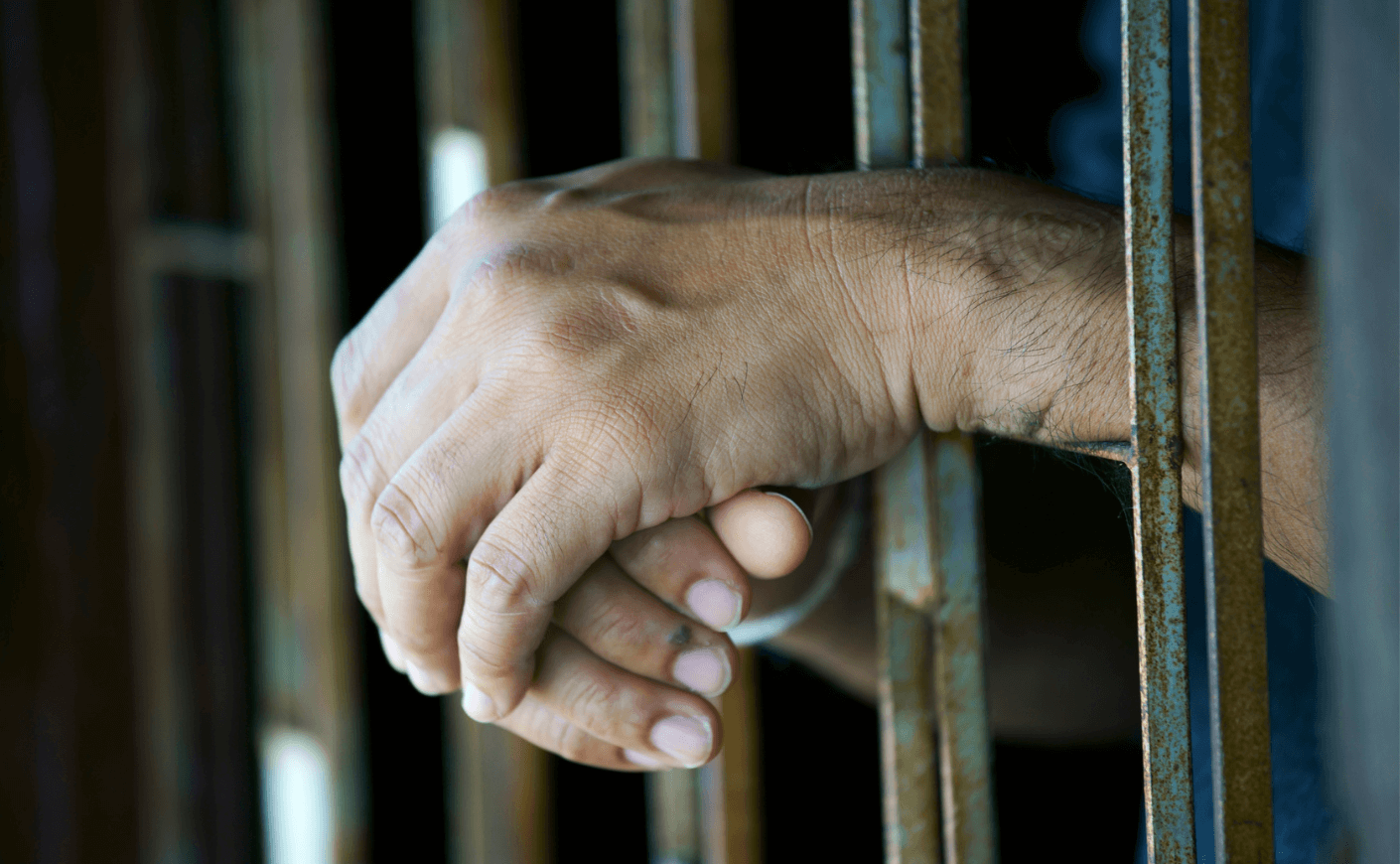For nearly 10 years I’ve reported on the broken system of capital punishment in America. But there was one death row inmate in Nevada whose memory I wasn’t able to shake — so much so that I decided to investigate his story from birth until death. That saga unfolds in my book, out today: The Volunteer: The Failure of the Death Penalty in America and One Inmate’s Quest to Die with Dignity.
For more than a year, I spoke with Scott Dozier multiple times per week, trying to understand him and his unusual decision to volunteer for execution. That’s right: Instead of exhausting his appeals, he wrote the judge a letter requesting he be put to death. For him, that was better than spending another few decades in a 9-foot-by-5-foot cell.
Through my reporting, I would come to see Dozier’s story as a powerful representation of our nation’s broken capital punishment system, one in which the vast majority of sentences were never fulfilled, where prisoners and their victims’ families were left in an unbearable limbo, where the very practice of lethal injection was so fraught that prison officials resorted to trading execution drugs amongst themselves in parking lots and importing them illegally from overseas. While reporting for this book, I’d often have to remind myself that these weren’t drug-trafficking cartels from shows like Breaking Bad, but were in fact American government officials enacting the will of its people.
Here’s how my story begins.
The Inmate
My strange journey into the world of death row began on October 9, 2017, when an executive producer at my documentary company emailed me a newswire from the Associated Press:
NV/FENT EXECUTION: State to use fentanyl to execute 46-year-old, Scott Dozier, in its first execution in more than a decade.
I hardly had time to take it in before I read the last line of the producer’s email, oh shit, echoing the very thought running through my mind.
The last several years had been the most exhilarating of my career. After working overtime and overnights at ABC News and Al Jazeera, I had landed a job as a correspondent with VICE News and was now getting to take the reins, covering stories I thought needed to be told. In Iraq, we witnessed how soldiers were fending off ISIS fighters on the front lines. At Guantánamo Bay, prison officers showed us how they were force-feeding detainees during hunger strikes. In Russia, hackers infiltrated American bank accounts and revealed their playbooks for lucrative scams. In Somalia, we were chased out of remote towns controlled by an al-Qaeda affiliate while showing how diaspora were risking their lives to rebuild the country.
A few months before I received the email about Dozier’s execution, as I was developing stories for season six of the HBO documentary show VICE, I had sent a message to my co-producer Nicole Bozorgmir with the subject line Death penalty. After producing more than 100 stories for the show, covering the most pressing issues around the world, from mass shootings to the war on terror, it was surprising we hadn’t covered the topic. A story about the death penalty would also give us the opportunity to point out the absurdity of the modern condition, a theme often present in our best segments.
We started to hone our story, about how states were failing to acquire the lethal injection drugs they needed to carry out their death sentences. My first step had been to reach out to a longtime source, Vanessa Potkin, a veteran attorney with the Innocence Project. She told me about a man named Eddie Lee Howard Jr., on Mississippi’s death row, where they hadn’t executed anybody in years because they couldn’t get the necessary drugs. Howard seemed like an incredibly compelling character, in part because Potkin said their team had DNA evidence they thought would exonerate him. I already knew, as I pored over Howard’s case, that 160 wrongfully convicted people had been exonerated from death row in America since 1973.
The only problem was, Potkin didn’t think we’d get an interview with Howard. State governments often refuse journalists in-person access to film with death row inmates before their executions have been scheduled.
We went down a list of potential interviewees, but it seemed none of the men (and they were virtually all men) had execution dates; after months of research, our leads were wearing thin. There was no way we were going to get an on-camera sit-down interview with one of these guys. Without that interview, the story wouldn’t get a green light.
During this search I pulled up the email from my executive producer. I focused on that name. Scott Dozier. I thought, What the hell, and typed it into Google, turning up mostly local media reporting on Dozier’s story, though there was one CNN article. “Execution in Nevada to Use Powerful Opioid Fentanyl,” its headline ran. When CNN picked up a local story, it was often a sign that it was poised to make the national news cycle soon.
I clicked on a related story by the Reno Gazette-Journal, and an early detail within it gave me pause: “Dozier was sentenced to death after he was convicted of first-degree murder for killing and dismembering Jeremiah Miller.”
Not exactly the character I had in mind, I thought. What kind of viewer is going to sympathize with this guy?
Still, I kept reading, discovering that while he might be, as I could only imagine, a sick and violent character, Dozier had one thing the other death row inmates didn’t: an execution date. It was in three weeks, on November 14. Soon, but also well within our deadline.
Another detail caught my eye, one that I could just as easily have missed. The article said that a judge had “recently granted his request to be put to death.”
He was, in other words, volunteering for execution. It occurred to me that since he was effectively asking the state to kill him, the prison might feel less threatened by inquiries from the media. After all, the government and the prisoner weren’t in disagreement; they both wanted his execution to happen.
It turned out I wasn’t even the first VICE reporter to have covered Dozier. In 2012, Dozier wrote a letter to a music editor there named Kelly McClure. Dozier was a VICE fan.
“You are hilarious and awesome and I love you,” he had written her, “not, however, like you’d reasonably (and correctly the vast majority of the time) presume someone on death row means when they say they ‘love’ you. You’ve made it plain you’re a lesbian — which is terrific, but again, not like you’d reasonably presume when someone on death row says, ‘Gee . . . I think it’s terrific you’re a lesbian.’ (I guess I can reasonably presume you’re not the same Kelly McClure from Boulder City, NV, who shared her virginity with me in the shower at Jeff Yinger’s house in the summer of ’85 for two reasons: I) I can’t imagine you’re old enough. II) you’re a lesbian . . . although she did play softball . . .).”
I laughed. He just didn’t sound like a death row inmate, or whatever I had been conditioned to believe a death row inmate should sound like. He didn’t strike me as scary or sociopathic, just kind of bizarre. “I’ve written the magazine before to no avail, and will likely continue to until the government-sanctioned murder of my corporeal being (and maybe my ‘soul’ too, guess we’ll see), as I’ve got a surplus of time on my hands and a catastrophic dearth of intelligence, hilarity, and awesomeness. I can only draw and work out so much.”
I sat staring at my computer absorbing all of this. We might have a shot with this guy. Dozier wasn’t the sympathetic, unjustly imprisoned inmate I had first imagined for the story. But we had begun to focus on pharmaceutical companies refusing to sell drugs for executions, leaving states to struggle to carry out the death sentences they had handed down. And at least in that sense, Dozier’s story worked.
That Dozier would, too, be the first inmate executed with the most newsworthy drug in decades, a pharmaceutical fueling the opioid crisis, and taking tens of thousands of lives a year in the United States alone, made the story feel all the more compelling.
I drafted a letter to Dozier.
“I work with VICE and am currently covering a story on the death penalty,” I started. “Given that your execution is scheduled for November 14 of this year, I wondered if you might be willing to speak with us beforehand. We’re interested to hear your story, to better understand life on death row and how you’ve opted to move your execution forward.”
I reluctantly typed out my cell phone number (feeling less than thrilled about handing it over to a convicted killer), then overnighted the letter to Dozier. All I could do now was wait.
Excerpted with permission from The Volunteer: The Failure of the Death Penalty in America and One Inmate’s Quest to Die with Dignity, by Gianna Toboni.
Gianna Toboni is a journalist and author. Formerly a correspondent for VICE, she has won Emmy, duPont-Columbia, and GLAAD Awards, and is on the Forbes‘ 30 Under 30 list for Media. The Volunteer is her first book.









